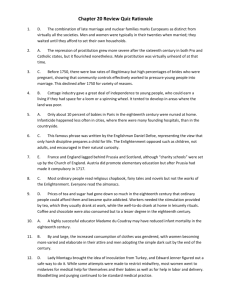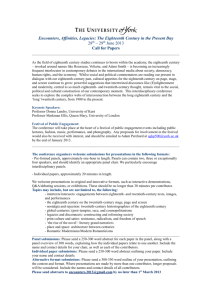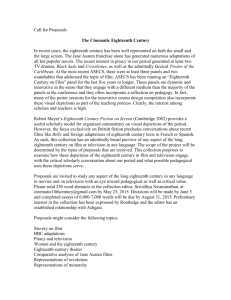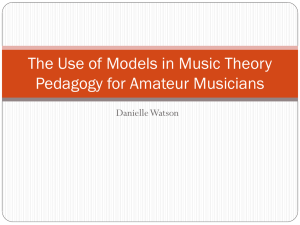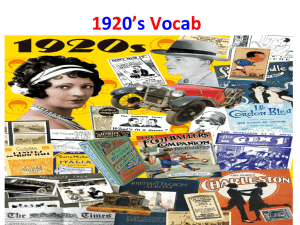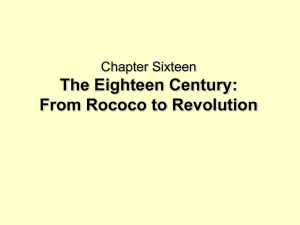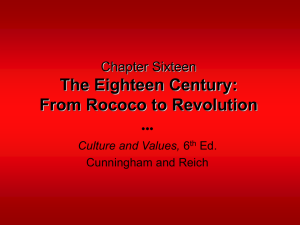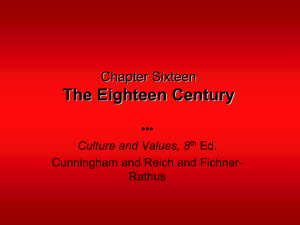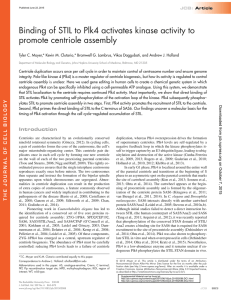New Currents in the Early Eighteenth Century
advertisement
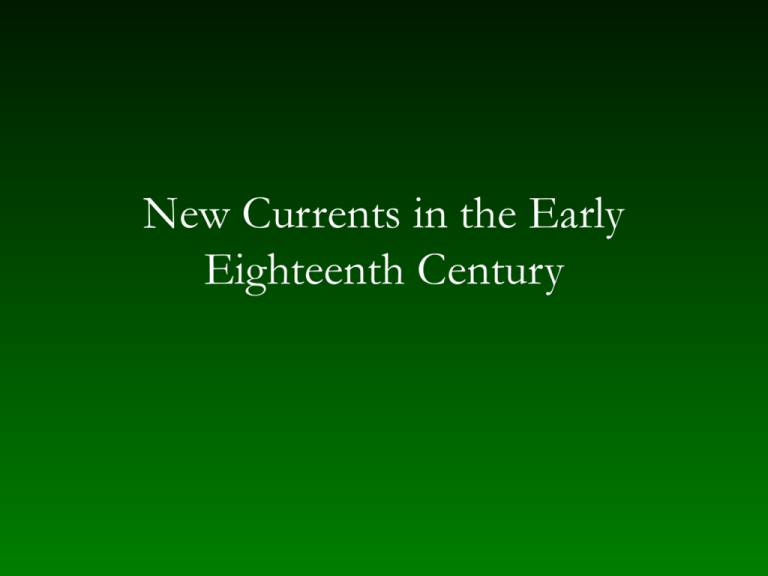
New Currents in the Early Eighteenth Century New aesthetic and stylistic values • Rejection of concentration on single affects: “The rapidity with which the emotions change is common knowledge, for they are nothing but motion and restlessness. . . . The musician must therefore play a thousand different roles; he must assume a thousand characters as dictated by the composer.” (Friedrich Wilhelm Marpurg (1718–1795), Der critische Musicus an der Spree (1749) • Flexibility and variety of style and texture become characteristic The theory of tonality • Jean-Philippe Rameau (1683–1764), Traité de l’harmonie réduite a ses principe naturels (1722) • Laid out basic principles of tonal harmonic practice – – – – triads, chord roots, inversion harmonic functions — tonique, dominante, sous-dominante modulation by change of harmonic function melody should be derived from harmony — reverses concept of harmony produced by counterpoint The galant in music • From galer, to have a good time (cf. “regale”) • Elegant, charming, graceful, natural — opposite of learned, serious, strict, artificial • Term galant indicates – music departs from aesthetic stiffness and procedural rules of the older style – awkward capriciousness is kept in check and appeal maintained by grace and good taste Aspects of galant style • Textures – light, soloistic; homophony, arpeggiation – change within a movement • Melodic/rhythmic flexibility and variety in a movement – short-breathed phrases rather than Fortspinnung – decorative surface — agréments • Simple harmony – considerable freedom from rules governing dissonances and voice leading • Simple forms Operatic comedy in the early eighteenth century • Opera buffa — comparable to intermezzo but independent • Controversy in Paris in 1750s — La Querelle [or Guerre] des bouffons – incited by reaction to 1752 production of Pergolesi’s La serva padrona – argument over merits of French vs. Italian style • Opéra comique — French style – used spoken dialogue rather than recitative – Jean-Jacques Rousseau (1712–1778), Le Devin du village (1752) Empfindsamkeit • German reaction against Rationalism • Emphasizes sensitivity/sentiment “. . . the incorrigible sentimentality of the Germanic soul broke into tears at the slightest provocation. Where the French created a style, delicate and frothy, but with a fine net of judiciously designed lines, the Germans wanted ‘mood,’ ‘atmosphere,’ and ‘feeling.’” Paul Henry Lang, Music in Western Civilization (1940) The empfindsamer Stil • Melody – speechlike model; rubato – sigh motives, gasping rests – ornaments interpreted as sentimental • Rhythmic flexibility • Dynamic effects • Harmonic irregularity – minor keys – chromatic harmony – unusual progressions • Varied textures • Freedom of form — especially in keyboard fantasy Carl Philipp Emanuel Bach (1714–1788) • Second-oldest son of J. S. Bach • Keyboard player — worked at court of Prussian king Frederick the Great in Berlin 1738–1768 • Kantor in Hamburg 1768–1788 • Composed keyboard music, songs, symphonies • Authored important treatise on keyboard playing, Versuch über die wahre Art das Klavier zu spielen (1753) • Leading composer in empfindsamer Stil The sinfonia in the eighteenth century • Developed from Italian operatic sinfonia – three movements — fast, slow, fast – small orchestra of a dozen to twenty players, often strings and basso continuo • Mannheim orchestra important for expanding scoring – increased winds — flutes, oboes, bassoons, horns, trumpets (and timpani) – effects including “Mannheim crescendo” (Roller), increasing melodic register, total sound space above pedal point, number of instruments, and dynamics leading to climax Forms in the early eighteenth century Basic model — binary form Balanced binary form • Theme associated with secondary key (S) returns with arrival of tonic in part 2 • Characteristic in sonatas of Domenico Scarlatti (1685–1757) Rounded binary form • Theme associated with initial presentation of tonic at the beginning returns with the tonic key in part 2 Questions for discussion • In what ways do the galant style and empfindsamer Stil differ, and what aspects of musical thinking do they share? • What social or political factors affected new ways of musical thinking in the early eighteenth century? • How did tonality’s function in the developing binary form in the early eighteenth century differ from its function in earlier musical forms?
